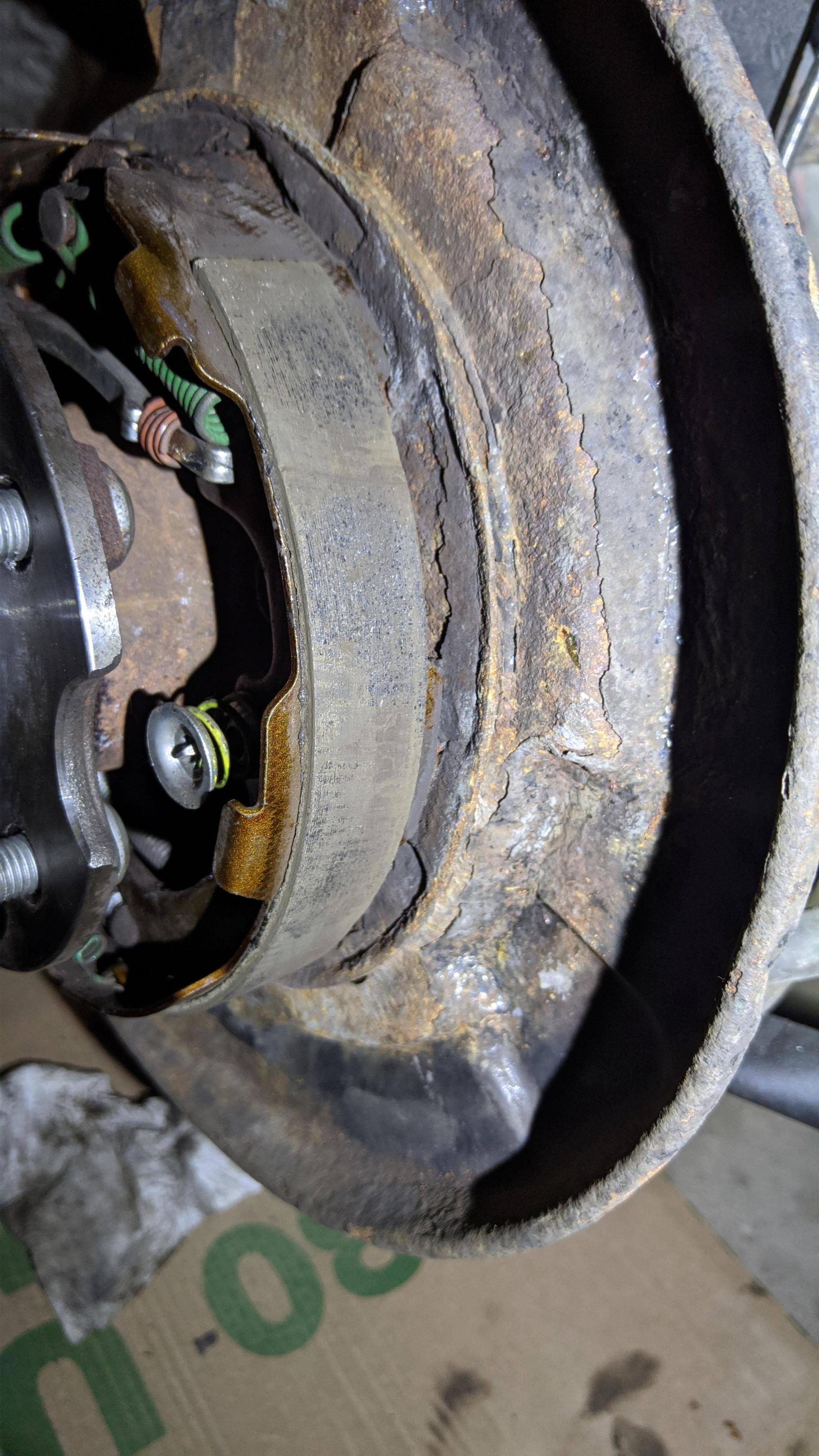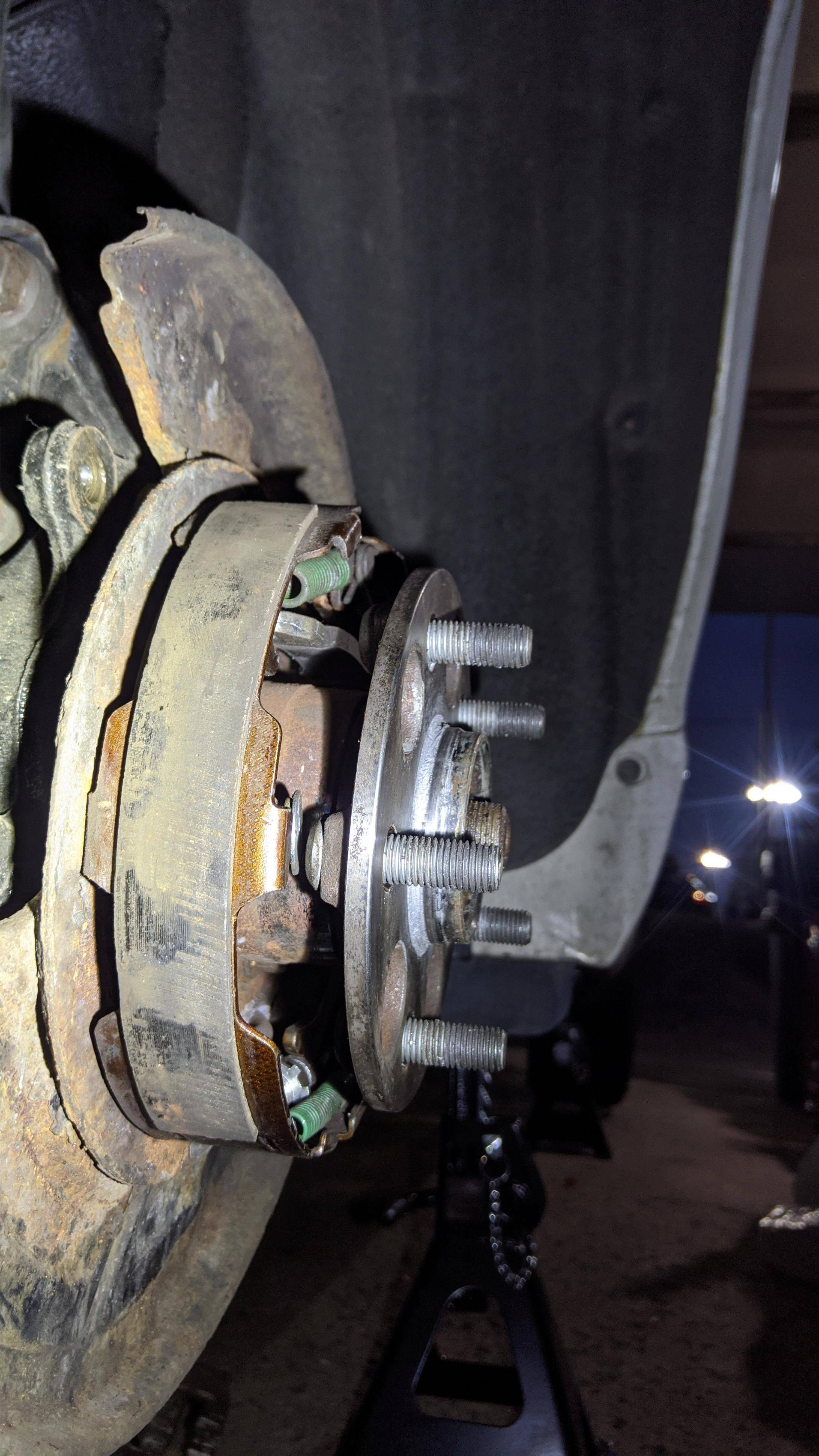I am trying to diagnose why a 2009 Toyota Venza's parking brake is not holding the vehicle securely. On any incline the vehicle will slide in N, never mind D or R.
After taking the rotor off, I observed that the shoes barely move when the parking brake is applied. Short videos of engaging/disengaging parking brake with wheel and rotor removed: https://i.imgur.com/QhhKml4.mp4
https://i.imgur.com/qEoVDUK.mp4
Is this the expected range of motion?
The brake cables where changed (one OEM, one non-OEM), as were the brake shoes and most of the parking brake hardware, and later the rotor/disc/drums as well. It was adjusted several times by multiple mechanics. The parking brake pedal has tension as soon as it starts moving and feels quite firm when fully pressed to 6-8 clicks and even before.
EDIT: After fully taking apart the parking brakes to inspect, clean, lubricate, and reassemble, I noticed:
The non-OEM cable might be slightly shorter than the OEM, because when applying the parking brake with the disc/rotor off, the parking brake lever reaches the metal stop on the dust shield, indicating full travel, and then jumps sideways past the stop. That is the loud "click" sound in the videos above. When it is inside the rotor it might not be able to make that lateral motion. The OEM cable on the other side brings the lever to the stop perfectly and no more. I wonder if this imbalance can cause some problem in the force applied or if the equalizer can manage this. Also, the non-OEM cable is clearly of lower quality: the head is smaller, the cable is thinner, and a few strands are already broken, probably from when a technician was trying to install it. It's a pain to work with compared to the OEM cable.
The parking brake's stopping power is not the same in the forward and reverse directions. With the parking brake engaged and the vehicle jacked up, I can't manually turn the wheel forward, but with moderate effort can turn the wheel in reverse.
The brake shoes do not appear to be making full contact. There are patches where some wear from contact is visible (shiny, metallic appearance), and the rest of the area has a matte dusty look. When I put the shoes inside the drum to check shape and tolerances, there seemed to be very slight imperfections which allowed me to rock the shoe to make contact with different sections. Very slight, but perceptible. Perhaps bedding in the shoes will wear them to match the drum and make full contact. I wonder if that would provide enough friction to hold the vehicle. The service manual includes a bedding procedure (step 24), and I highly doubt it has been done.


